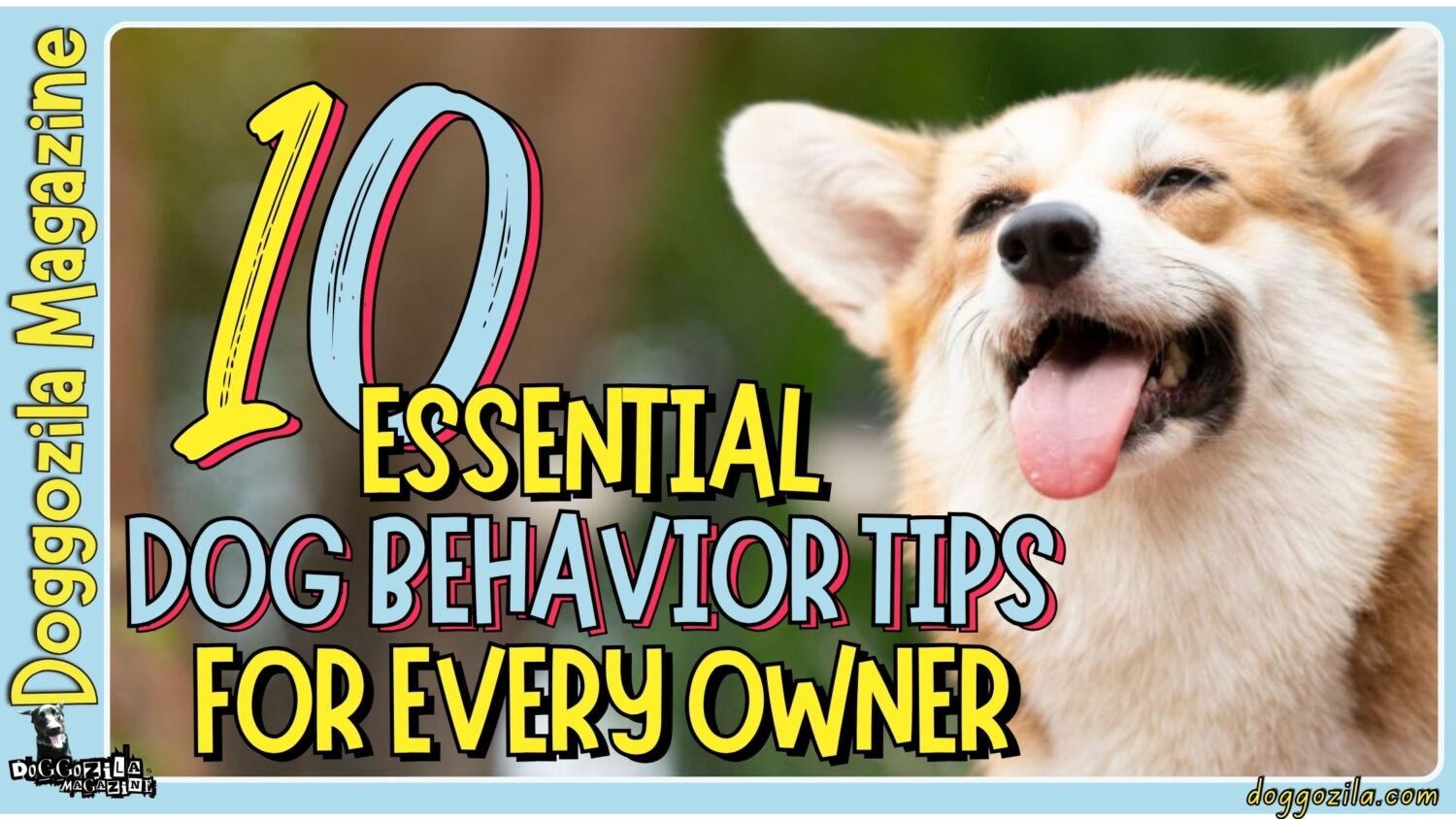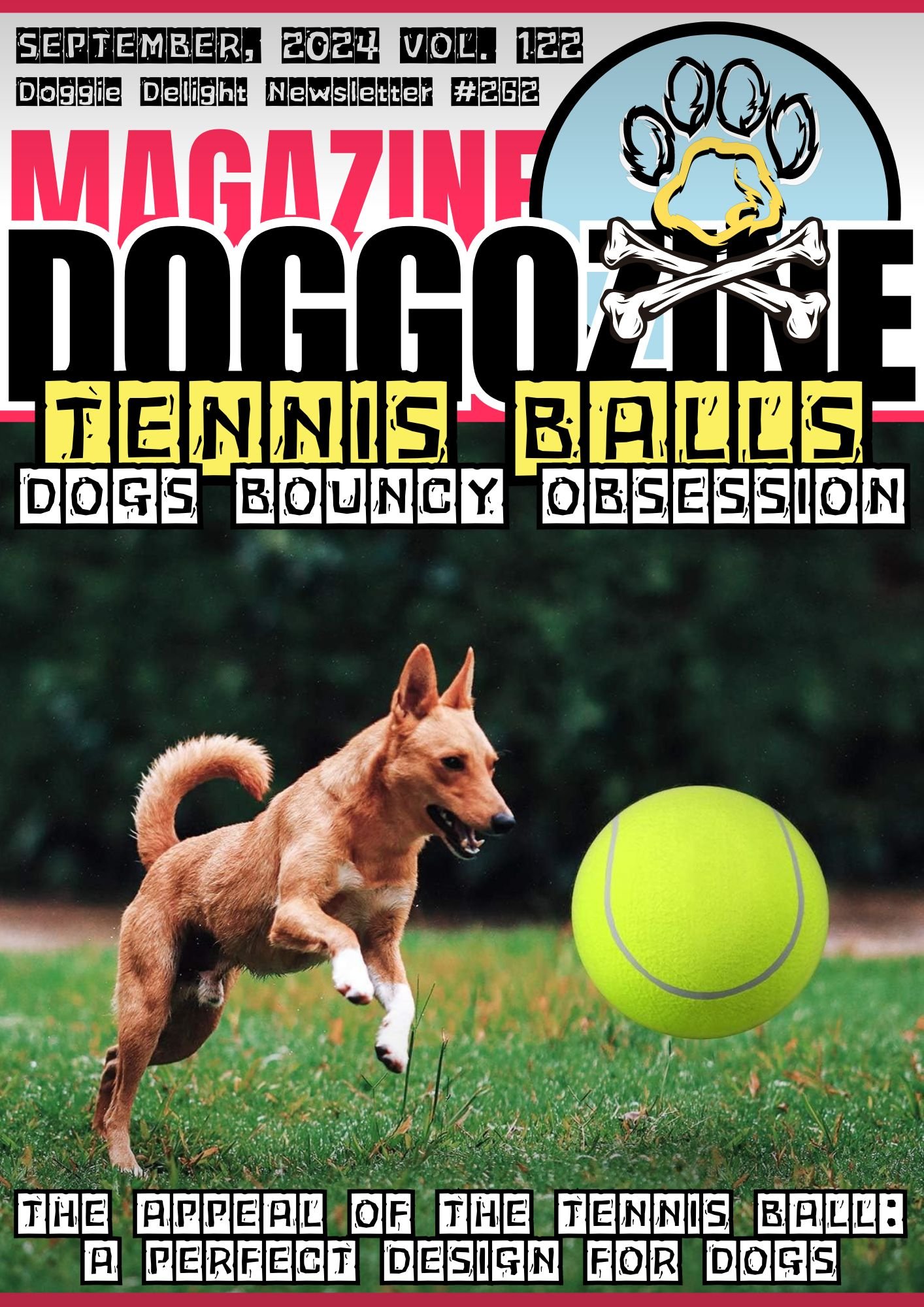
REASONS WHY DOGS LOVE TENNIS BALLS
Dogs have a seemingly universal obsession with tennis balls. Whether at the park, in the backyard, or even indoors, many dogs can’t resist the urge to chase, chew, and play with these bright, bouncy spheres. But what is it about tennis balls that captivate our canine companions so much?
In this article, we’ll dive into the reasons why dogs love tennis balls, explore the psychology behind this fascination, and offer tips for safe and enjoyable play.
The Appeal of the Tennis Ball: A Perfect Design for Dogs
Tennis balls are designed with specific features that make them irresistible to dogs.
Let’s break down why these features are so appealing:
- Size and Shape: Tennis balls are the perfect size for most dogs to carry in their mouths comfortably. Their round shape makes them easy to roll and chase, while their small size makes them easy to pick up, even for smaller breeds. The shape of a tennis ball mimics prey animals in the wild, like rodents or birds, which may trigger a dog’s natural hunting instincts.
- Color and Visibility: The bright, neon yellow-green color of a tennis ball is highly visible against various backgrounds, making it easy for dogs to spot. Dogs have dichromatic vision, meaning they see the world primarily in shades of blue and yellow. The yellow hue of a tennis ball contrasts sharply with the blue of the sky or the green of grass, making it stand out to a dog’s eyes.
- Texture and Grip: The fuzzy texture of a tennis ball provides a satisfying grip for a dog’s teeth and jaws. This texture also makes the ball easy to chew on, which can be soothing and enjoyable for dogs. The surface of a tennis ball offers just the right amount of resistance, creating a satisfying sensory experience for dogs as they bite down.
- Bounce and Movement: Tennis balls are designed to bounce, which adds an element of unpredictability and excitement to playtime. The bouncing movement mimics the erratic behavior of small prey animals, triggering a dog’s instinctual chase response. The way a tennis ball moves unpredictably across the ground is highly engaging for dogs, making it an irresistible target.
Instinctual Drives: The Hunting and Prey Drive
Dogs are descended from wolves, and despite thousands of years of domestication, many still retain strong instinctual drives. Two of the most significant drives are the hunting and prey drives, which can explain why dogs are so attracted to tennis balls.
- Hunting Instinct: Dogs are natural hunters. In the wild, wolves hunt for survival, and domestic dogs have inherited these instincts. Tennis balls resemble small prey animals in size, movement, and texture, triggering a dog’s natural hunting instincts. Chasing, catching, and retrieving a tennis ball is a way for dogs to exercise these instincts in a safe and controlled environment.
- Prey Drive: Prey drive is the instinct to chase and capture moving objects. Different breeds have different levels of prey drive, but most dogs have some degree of this instinct. The erratic bounce of a tennis ball activates the prey drive in dogs, leading them to chase, pounce, and capture the ball. This behavior provides mental and physical stimulation, which is satisfying and fulfilling for dogs.
🔑 Key Points: Dogs’ love for tennis balls is deeply rooted in their primal prey drive, as the erratic motion and size of the ball mimic the movements of small prey, igniting their natural hunting instincts.

THE ROLE OF PLAY IN DOG BEHAVIOR
Play is an essential part of a dog’s life. It provides mental stimulation, physical exercise, and an opportunity for social interaction. Tennis balls are a perfect tool for play, offering multiple ways to engage a dog’s mind and body.
Physical Exercise, Mental Stimulation and Social Interaction
Playing with a tennis ball is a great way for dogs to get physical exercise. Running, jumping, and chasing a ball helps dogs burn off energy, build muscle, and maintain a healthy weight. Regular exercise is crucial for a dog’s overall health, helping to prevent obesity and related health issues.
Playing with a tennis ball also provides mental stimulation. Chasing and retrieving a ball requires focus, problem-solving skills, and quick reflexes. This mental engagement can help reduce boredom and prevent destructive behaviors that may arise from lack of stimulation.
Playing fetch with a tennis ball is an excellent way for dogs to interact with their owners and other dogs. This social interaction helps strengthen the bond between dogs and their humans, providing a sense of companionship and security. Playing with other dogs also helps dogs develop social skills and learn appropriate behaviors.
The Bond Between Dogs and Their Owners
Playing with a tennis ball is not only fun for dogs; it also strengthens the bond between dogs and their owners. The act of playing fetch, for example, is a cooperative activity that builds trust and reinforces the human-dog relationship.
- Positive Reinforcement: When dogs play with tennis balls, they often receive positive reinforcement in the form of praise, treats, or affection from their owners. This positive reinforcement encourages dogs to engage in the behavior again, strengthening the bond between dog and owner.
- Trust and Communication: Playing fetch requires a level of trust and communication between a dog and its owner. Dogs learn to trust their owners to throw the ball, and owners learn to understand their dog’s cues and signals during play. This mutual understanding enhances the bond and fosters a sense of companionship.
- Enjoyment: The joy of playing with a tennis ball is a shared experience between dogs and their owners. This shared enjoyment creates positive memories and strengthens the emotional connection between them. The simple act of throwing and retrieving a ball can be a source of happiness and fulfillment for both dogs and their owners.
Safe Play: Ensuring Your Dog’s Well-Being
While tennis balls can provide endless entertainment for dogs, it’s essential to ensure that playtime is safe and enjoyable.
Here are some tips for safe play with tennis balls:
- Supervision: Always supervise your dog during playtime with tennis balls. Supervision helps prevent accidents, such as choking or ingesting parts of the ball. It also allows you to monitor your dog’s behavior and intervene if play becomes too rough or aggressive.
- Size Appropriateness: Choose tennis balls that are appropriate for your dog’s size. Small tennis balls can pose a choking hazard for larger dogs, while large balls may be difficult for small dogs to carry. Select a ball size that is easy for your dog to pick up and carry safely.
- Inspect Balls Regularly: Regularly inspect tennis balls for signs of wear and tear. Chewed-up balls or balls with loose parts can pose a choking hazard or cause internal injuries if swallowed. Replace damaged balls immediately to ensure your dog’s safety.
- Limit Chewing Time: While chewing on tennis balls can be enjoyable for dogs, excessive chewing can wear down their teeth and potentially damage the ball’s surface. Limit chewing time and provide your dog with appropriate chew toys to satisfy their chewing instincts.
- Avoid Overexertion: Playing fetch with a tennis ball can be intense exercise, so it’s important to avoid overexerting your dog. Pay attention to your dog’s energy levels and take breaks as needed. Provide water and shade during playtime, especially on hot days, to prevent heat exhaustion.
🔑 Key Points: The release of endorphins and dopamine during play with tennis balls creates a powerful positive association and emotional connection, reinforcing a dog’s desire to engage in this joyful activity.
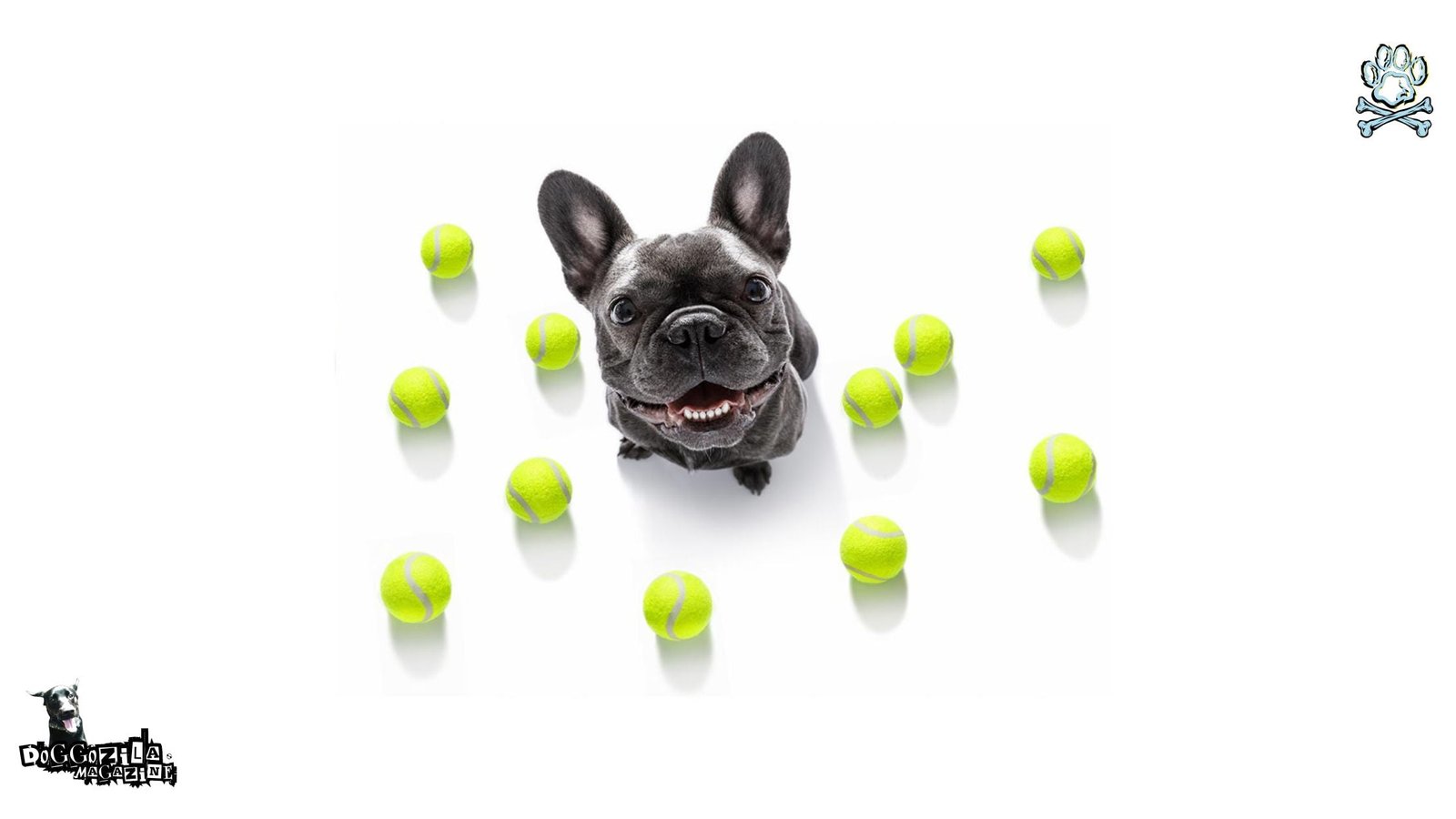
ALTERNATIVES TO TENNIS BALLS: EXPLORING OTHER TOYS
While tennis balls are a popular choice for dog play, there are plenty of other toys that can provide similar benefits. Exploring a variety of toys can keep playtime exciting and engaging for your dog.
Rubber Balls, Frisbees and Rope Toys
Rubber balls are durable and designed to withstand chewing and rough play. They come in various sizes and textures, making them suitable for different breeds and play styles. Rubber balls are also easy to clean and can float, making them great for water play.
Frisbees are an excellent alternative to tennis balls, especially for dogs that love to run and jump. Playing frisbee provides physical exercise and helps improve a dog’s agility and coordination. Look for dog-safe frisbees made of soft, flexible material to prevent injury.
Rope toys are great for dogs that enjoy tug-of-war or chewing. The texture of the rope helps clean teeth and massage gums, promoting dental health. Rope toys can be used for interactive play with your dog or as a chew toy for independent play.
Squeaky Toys and Puzzle Toys
Squeaky toys add an auditory element to playtime, making them highly engaging for dogs. The squeaking sound mimics the noise of prey animals, triggering a dog’s natural hunting instincts. Squeaky toys come in various shapes and sizes, catering to different preferences.
Puzzle toys provide mental stimulation and challenge a dog’s problem-solving skills. These toys often involve hiding treats or kibble inside, encouraging dogs to figure out how to access the reward. Puzzle toys can help keep dogs entertained and mentally sharp.
The Joy of Tennis Balls for Dogs
Tennis balls hold a special place in the hearts of many dogs. Their size, shape, texture, and bounce make them the perfect playtime companion, triggering natural instincts and providing endless entertainment. Understanding why dogs love tennis balls can help owners provide more enriching play experiences and strengthen the bond with their furry friends.
By ensuring safe play practices, offering a variety of toys, and engaging in interactive play, dog owners can create a happy and fulfilling environment for their canine companions. Whether it’s a game of fetch, a friendly tug-of-war, or a satisfying chew session, tennis balls and other toys play a crucial role in the physical and mental well-being of dogs.
So, the next time your dog excitedly chases after a tennis ball, you’ll know that it’s more than just a game—it’s a fulfilling activity that taps into their natural instincts, provides exercise, and fosters a deeper connection between you and your dog.
🔑 Key Points: Alternatives to tennis balls could be: Rubber Balls, Frisbees and Rope Toys, Squeaky Toys and Puzzle Toys. With offering a variety of toys, and engaging in interactive play you can bring endless joy to all dogs.

TENNIS BALLS AND TRAINING: USING PLAY AS A MOTIVATIONAL TOOL
Tennis balls can be more than just toys for playtime—they can also be effective tools for training and behavior modification. Incorporating tennis balls into training sessions can make learning fun and engaging for dogs.
Using Tennis Balls for Positive Reinforcement
Positive reinforcement is a training method that rewards desired behavior with something the dog loves. For many dogs, tennis balls are a high-value reward. You can use the promise of playtime with a tennis ball to motivate your dog to follow commands or learn new tricks. For example, you might reward your dog with a throw of the tennis ball when they successfully sit, stay, or come when called.
Teaching Fetch and Drop Commands
Teaching a dog to fetch and return a tennis ball is a great way to encourage exercise and reinforce obedience. Start by encouraging your dog to chase the ball, then use commands like “fetch” and “bring it” to guide their behavior. Once your dog has retrieved the ball, use a command like “drop it” to have them release the ball. Reward them with another throw or a treat to reinforce the behavior.
Building Impulse Control
Dogs can sometimes get overly excited during play, leading to impulsive behavior. Tennis balls can be used to teach impulse control. For example, you can work on commands like “wait” or “leave it” by holding the tennis ball and only throwing it when your dog has calmed down and obeyed the command. This practice teaches dogs to control their impulses and wait for permission before chasing the ball.
Reducing Anxiety and Boredom
Many dogs experience anxiety or boredom, especially when left alone for long periods. Providing a tennis ball for your dog to play with can help alleviate these feelings. The act of chasing and chewing a tennis ball can provide mental stimulation and a healthy outlet for pent-up energy, reducing anxiety and preventing destructive behaviors.
🔑 Key Points: Incorporating tennis balls into training sessions can make learning fun and engaging for dogs. You can use tennis balls or other toys as props for a reward for job well done.
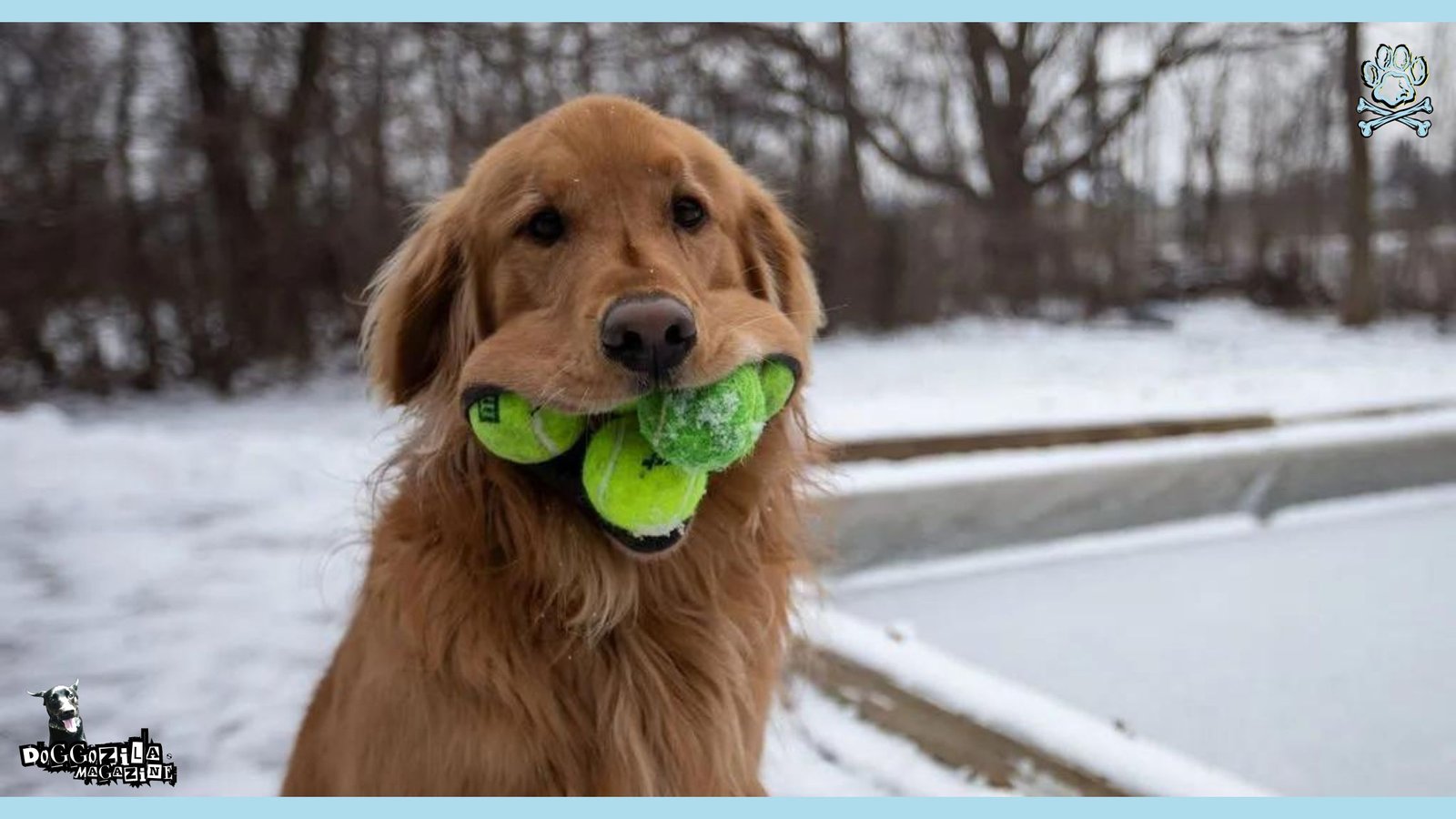
THE IMPACT OF TENNIS BALL PLAY ON DOG HEALTH
While playing with tennis balls offers numerous benefits, it’s essential to be aware of potential health concerns to ensure your dog’s safety and well-being.
Dental Health
Chewing on tennis balls can be enjoyable for dogs, but it can also cause wear and tear on their teeth. The abrasive texture of a tennis ball’s fuzz can wear down a dog’s tooth enamel over time. To prevent dental damage, limit the amount of time your dog spends chewing on tennis balls. Provide dental chews and toys specifically designed to promote oral health.
Choking Hazards
Tennis balls can pose a choking hazard, especially for larger dogs with powerful jaws. If a tennis ball is too small, it could be swallowed whole or get lodged in the throat. Always choose tennis balls that are the appropriate size for your dog, and inspect them regularly for signs of damage. Discard any balls that are worn out, chewed up, or have pieces coming off.
Joint Health
Excessive running and jumping during fetch can strain a dog’s joints, particularly in breeds prone to hip dysplasia or arthritis. To protect your dog’s joint health, avoid excessive high-impact activities. Use softer surfaces like grass or sand for play, and provide adequate rest and recovery time after intense play sessions.
Environmental Considerations
Tennis balls can collect dirt, grass, and bacteria from the environment, which may be ingested by dogs during play. Regularly clean and sanitize tennis balls to reduce the risk of infection or illness. Use pet-safe cleaning products, and avoid harsh chemicals that could be harmful if ingested.
Embracing the Joy of Tennis Balls Safely
Dogs’ love for tennis balls is a testament to their playful nature and instinctual drives. These simple toys provide endless entertainment, mental stimulation, and physical exercise, making them a beloved choice for dogs and their owners. By understanding why dogs love tennis balls and incorporating safe play practices, owners can enhance their dogs’ quality of life and foster a deeper, more meaningful connection.
Whether you’re playing a game of fetch at the park, enjoying a tug-of-war in the backyard, or using a tennis ball as a training tool, these bright, bouncy spheres are a gateway to happiness and well-being for our canine companions. Embrace the joy of tennis balls, ensure safe play, and watch as your dog’s eyes light up with excitement—because for them, a tennis ball is more than just a toy; it’s a source of joy, adventure, and love.
🔑 Key Points: Playing with tennis balls provides dogs with emotional satisfaction, mental stimulation, and social interaction, enhancing their overall well-being and strengthening the bond between dog and owner.

FREQUENTLY ASKED QUESTIONS ABOUT DOGS AND TENNIS BALLS
To further enrich your understanding of why dogs love tennis balls, below in this article are some common questions and answers that dog owners often have about dogs and tennis balls!
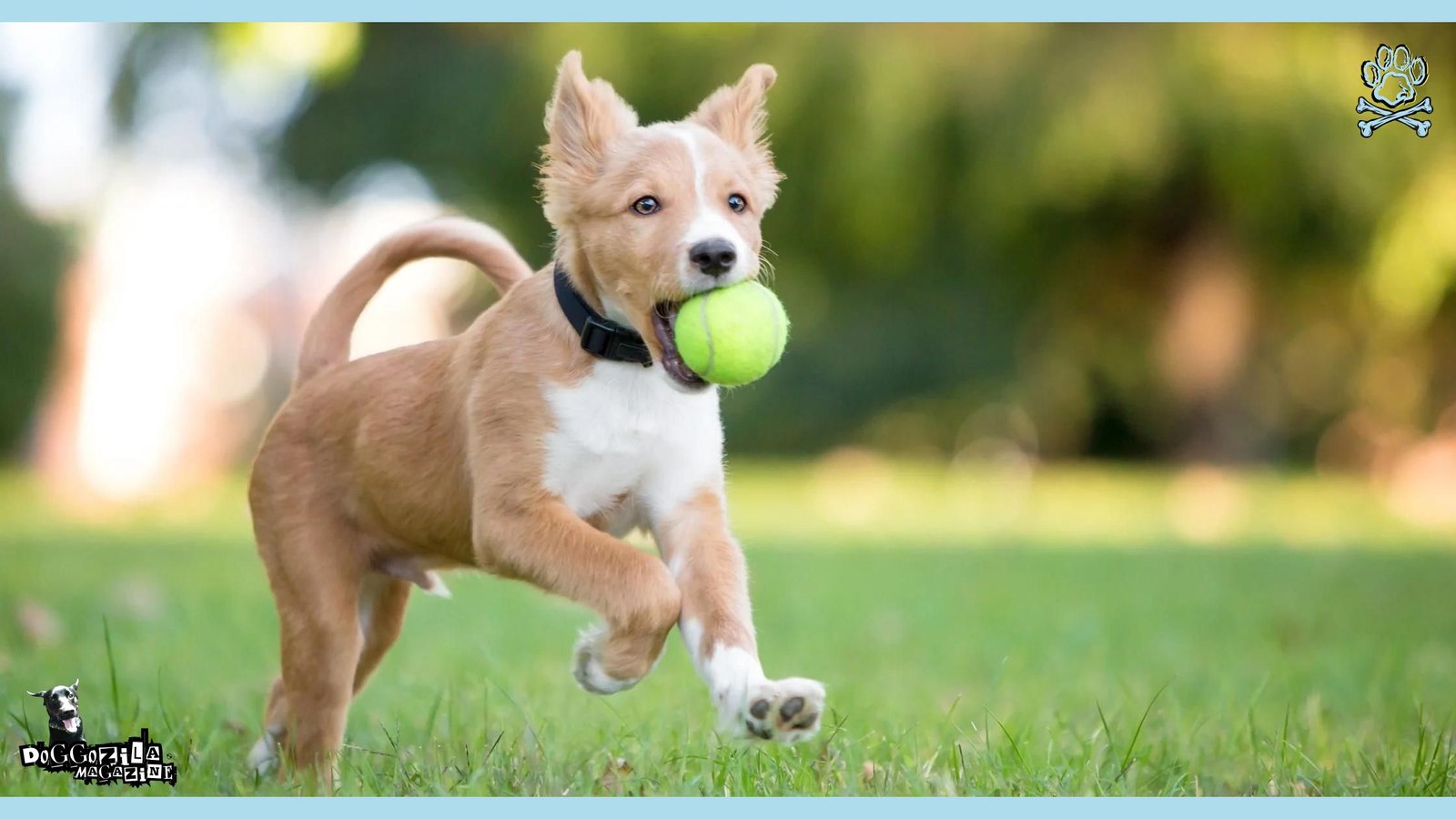
UNDERSTANDING YOUR DOG’S PREFERENCES: BEYOND TENNIS BALLS
While tennis balls are a favorite for many dogs, it’s valuable to explore your dog’s individual preferences to provide a diverse range of enrichment opportunities.
Here are some ideas to tailor playtime to your dog’s unique needs:
Experiment with Different Types of Toys
Dogs have different preferences when it comes to toys. Some may prefer toys that squeak, while others enjoy toys that can be chewed or tugged. Experiment with a variety of toys to find out what excites your dog the most. Consider interactive toys that challenge your dog’s mind and provide a mix of sensory experiences.
Incorporate Interactive Play
Interactive play involves engaging with your dog in a way that stimulates both their mind and body. Activities like hide-and-seek, puzzle games, and agility training can complement tennis ball play and offer additional enrichment. Interactive play helps build a stronger bond and keeps your dog mentally sharp.
Consider Your Dog’s Physical Needs
Each dog has unique physical needs based on their age, breed, and health status. For instance, older dogs or those with joint issues may benefit from softer toys or low-impact activities. Tailoring playtime to your dog’s physical condition ensures they remain active and comfortable.
Engage in Varied Activities
Variety is key to maintaining your dog’s interest and preventing boredom. Incorporate different activities such as swimming, hiking, or training exercises into your dog’s routine. This variety helps keep your dog engaged and ensures they receive a well-rounded mix of physical and mental stimulation.
Final Thoughts: Celebrating the Joy of Play and The Love for Tennis Balls
The joy of tennis balls extends beyond their physical attributes, they symbolize the bond between dogs and their owners and the simple pleasures of play. Understanding why dogs love tennis balls allows us to appreciate the depth of their instincts and the ways we can enhance their lives through play and enrichment.
By incorporating safe play practices, exploring a range of toys, and paying attention to your dog’s individual needs, you can create a fulfilling and joyful environment for your furry friend. Whether it’s a game of fetch in the park, a playful tug-of-war session, or a rewarding training exercise, the joy of tennis balls enriches both your dog’s life and your own.
Celebrate the playtime moments with your dog, cherish the shared experiences, and continue to discover new ways to engage and delight your canine companion. Tennis balls may be simple toys, but they hold a special place in the hearts of dogs and their owners, bringing joy, exercise, and connection into every game.
Did you know that we have a guide article to teach your dog to play fetch?
Well, just click on the red letters above and read out guide on fetch!
Did you know that dog playfulness is a sign of higher intelligence?
A study says that this might be true after all! Read our article on the topic!
–ARE PLAYFUL PUPS SMARTER DOGS?–
Check more indoor dog games when the weather outside it’s not to your liking!

